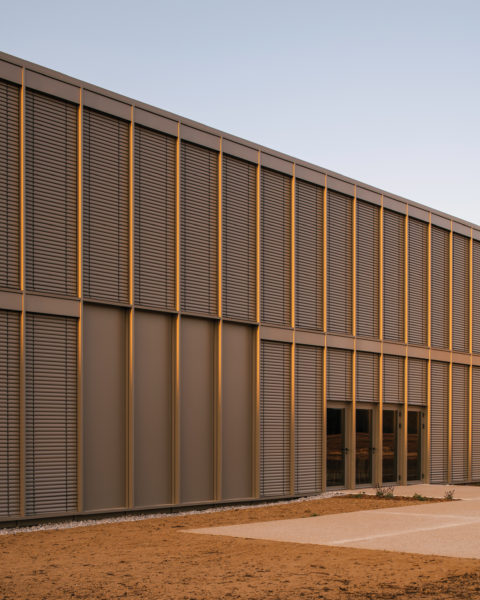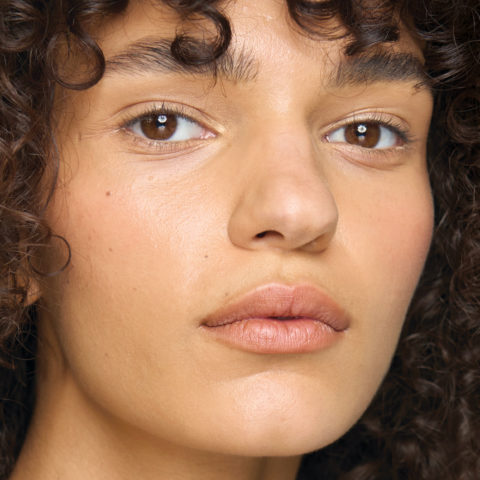From a New Eco-Friendly Facility to Reformulated Products: Caudalie’s Ambitious Plans For Addressing Sustainability
“The clean-beauty movement is a no-brainer. I think it’s a good start, and it’s just the beginning.”
When Mathilde and Bertrand Thomas, co-founders of French beauty brand Caudalie, lived in Hong Kong with their family to grow the company in the Asian market, the pollution was so intense that upon waking, Mathilde would check the air quality before the weather. “Hong Kong gets all the fumes from China,” she says. Then there was the garbage outside on the beach as well as in the water. “You surf, and in the waves you have plastic,” she says of the floating debris. As the head of a brand that sells several products packaged in the same material, she knew she had to address her own contribution to the problem; even her kids told her. “My teenagers would point at me and say ‘Mom, you should work on that.’”
Lest you think that the Thomases are only now waking up to the current environmental crisis, it’s worth noting that Caudalie—known for its vinotherapy skincare—is the biggest European contributor to 1% for the Planet (one reason its millennial employees are drawn to the company) and since 2012 has donated almost $12 million of its sales to environmental organizations. But with its recently opened eco-conscious facility that was three years in the making, it’s clear that the company is determined to make an even bigger impact as the brand continues to grow. “This is just who we are and what we want to do with the company,” Mathilde says.

Located about an hour’s train ride from Paris, in the village of Gidy, the new site is situated on more than 14 hectares and was built to maximize its isolation, making it less in need of heat and air conditioning. Currently it houses labs, a warehouse and offices, but it will eventually also include production, a garden and wildlife. “We bought the land and planned everything,” says Bertrand. In order to be energy efficient, the buildings use solar panels, smart blinds—they open or close on their own depending on the daylight—and a geothermal system that brings water up from the ground and transforms it into cool or hot energy. “We think it’s the future,” he says.
Ingredient-wise, Caudalie is already ahead of other beauty brands. Since 2005, it has removed about 30 ingredients (sulfates, mineral oil), and more are on their way out (silicones, polyethylene glycol—a.k.a. PEG). “The clean-beauty movement is a no-brainer,” says Mathilde, commending Sephora for finally getting on board with promoting the category. “I think it’s a good start, and it’s just the beginning.” For her part, she’s pushing even further: When she and her family moved back from Asia last January, the first thing she did was dissect all 70 formulas in the line and scrutinize each element. “I wanted to see which ones were red, which were green and which we could substitute and replace,” she says. Her goal is for each product to be more than 95 per cent natural, but she’s not against using synthetic, human-made ones if they’re safe and biodegradable, such as glycolic acid and niacinamide.
“The clean-beauty movement is a no-brainer. I think it’s a good start, and it’s just the beginning.”
While Mathilde knows that reformulating is a tougher sell to consumers and even her sales team—they already know the product so it’s not new or exciting—she’s not deterred. “We have to change their mentality,” she says. The first to undergo this process was Vinoperfect Brightening Glycolic Overnight Cream, which relaunched earlier this year. “We cleaned it but kept the active ingredient,” she says of the proprietary Viniferine, which brightens skin by morning. The packaging also got an upgrade. “Glass is infinitely more recyclable, so I changed it from a plastic tube to a glass jar,” she says. “And no more spatulas—you have to apply it with your fingers.” Soon, all the spatulas will be removed, which translates to 1.3 tonnes of plastic.
By 2020, improving packaging will take on an even greater focus, with the help of a newly hired green-packaging engineer. The company has been using plastic made from sugar cane for the past eight years, but it’s not compatible with every product so other options need to be explored. Further changes include switching more items over to glass (“It’s an honourable material even though it’s heavier to transport,” says Mathilde) and eliminating all the leaflets inside the boxes, which means minus 23 tonnes of paper. There’s also a recycling program with TerraCycle in France—which involves returning empties for points toward purchases—that she wants to bring to other markets such as Canada. A refill system is also being looked into.

New products are in the works, too. Next year, there will be “a super-powerful moisturizer that is highly natural” and a cleansing jelly that is 99 per cent natural. Mathilde is also exploring fragrance and makeup, which she’d either love to develop herself or buy as an existing line, citing Danish brand Kjaer Weis as one that has caught her eye. “It’s very fancy, with good colours,” she says. Hair care is also being considered, since the company’s new head of research and development worked at Phyto for 20 years.
Though Caudalie is still privately owned (the Thomases receive an email a week from interested buyers), it continues to sell 20 million products a year. So it’s no small feat they are undertaking with revising formulas and overhauling packaging for every collection. They accept that it’s impossible to be perfectly green and that they can only do the best they can. But as a company, they believe that the onus is on them to make radical changes and revolutionize. “My conclusion after all these years is that it won’t come from politicians,” says Bertrand. “It will come from the relationship between the customers and the brands.”








